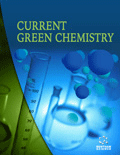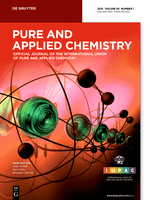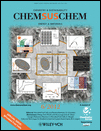
Current Green Chemistry
Scope & Guideline
Transforming chemical research for a sustainable tomorrow.
Introduction
Aims and Scopes
- Sustainable Synthesis Methods:
Research focusing on the development of new synthetic methodologies that minimize waste and reduce the use of hazardous substances. This includes one-pot reactions, solvent-free processes, and the use of renewable resources. - Biocatalysis and Biological Methods:
Exploration of biological systems and biocatalysts for the synthesis and transformation of chemicals, which often results in milder reaction conditions and reduced environmental impact. - Nanotechnology in Green Chemistry:
Investigation into the synthesis and application of nanomaterials that contribute to greener chemical processes, including catalysis, drug delivery, and environmental remediation. - Waste Reduction and Valorization:
Studies aimed at converting waste materials into valuable products, thereby addressing waste management challenges and promoting circular economy principles. - Green Analytical Methods:
Development of eco-friendly analytical techniques that reduce the use of toxic solvents and reagents, focusing on efficiency and sustainability in chemical analysis. - Environmental Remediation:
Research aimed at developing innovative solutions for the remediation of pollutants using green chemistry principles, including bioremediation and the use of eco-friendly materials.
Trending and Emerging
- Electrochemical Synthesis:
There is a marked increase in research focusing on electrochemical methods for synthesis, which offer a more sustainable and energy-efficient alternative to traditional chemical processes. - Biobased and Biodegradable Materials:
Emerging interest in the development of biobased and biodegradable materials highlights a trend towards reducing plastic waste and promoting sustainability in materials science. - Green Nanotechnology:
The application of nanotechnology in green chemistry is gaining traction, with studies exploring the synthesis and use of nanomaterials for catalysis and environmental remediation. - Plant-Based Synthesis:
Research utilizing plant extracts for the synthesis of nanoparticles and other materials is on the rise, reflecting a growing interest in natural resources and sustainable practices. - Innovative Waste Valorization Techniques:
New methods for waste valorization are emerging, focusing on converting agricultural and industrial waste into valuable products, thus promoting a circular economy.
Declining or Waning
- Traditional Solvent-Based Synthesis:
There is a noticeable reduction in research focusing on conventional solvent-based synthesis methods, as the field increasingly emphasizes solvent-free and greener alternatives. - Heavy Metal Catalysis:
Research on heavy metal catalysts has decreased, likely due to growing concerns over toxicity and environmental impact, with a shift towards more sustainable catalytic systems. - Conventional Extraction Methods:
The focus on traditional extraction methods is waning, as researchers are increasingly adopting greener extraction techniques that utilize less harmful solvents and energy. - Single-Use Plastics in Chemical Processes:
There is a declining trend in discussing the use of single-use plastics in laboratory and industrial settings, as the emphasis on sustainability and waste reduction grows. - Non-renewable Resource Utilization:
Research that relies heavily on non-renewable resources is becoming less prominent as the journal encourages studies that explore renewable and sustainable materials.
Similar Journals

PURE AND APPLIED CHEMISTRY
Exploring Innovations in Chemical EngineeringPURE AND APPLIED CHEMISTRY is a highly regarded journal in the fields of chemical engineering and general chemistry, published by Walter de Gruyter GmbH. Since its inception in 1960, this journal has continued to foster advancements in chemical research and facilitate the dissemination of new knowledge through its rigorous peer-reviewed articles. With an impressive impact factor that places it in Q2 quartile rankings for both Chemical Engineering and Chemistry as of 2023, it holds a significant position in the academic landscape, attracting authors and contributors from around the globe. The journal’s unique focus on the practical applications of chemical research makes it indispensable for researchers, professionals, and students aiming to bridge theoretical knowledge with real-world applications. Although it is not open access, its impact is enhanced by its continued relevance and contributions to the ever-evolving field of chemistry. Researchers and practitioners alike will find in PURE AND APPLIED CHEMISTRY a critical resource for staying updated on key developments and innovative practices in chemistry and chemical engineering.

RUSSIAN CHEMICAL BULLETIN
Advancing the Frontiers of Chemistry.RUSSIAN CHEMICAL BULLETIN, published by SPRINGER, serves as a pivotal resource in the field of general chemistry, covering a wide array of topics that impact both theoretical and applied chemistry. With an ISSN of 1066-5285 and a presence since 1993, this journal provides a platform for disseminating significant research findings, practical applications, and novel methodologies within the broader chemistry community. While it currently holds a Q3 ranking in the Chemistry (miscellaneous) category and occupies the 230th position out of 408 in the Scopus rankings, its reputation continues to grow, fostering collaboration and innovation among researchers and professionals alike. Although the journal does not offer an open-access model, it is committed to making findings accessible within the academic community, ensuring that valuable insights can inform future research. With an anticipated convergence of studies extending to 2024, the RUSSIAN CHEMICAL BULLETIN remains an essential reference for those dedicated to advancing chemical science.

SYNTHETIC COMMUNICATIONS
Catalyzing Collaboration in Organic Chemistry ResearchSynthetic Communications, published by Taylor & Francis Inc, stands as a pivotal resource in the field of organic chemistry since its inception in 1971. With an ISSN of 0039-7911 and an E-ISSN of 1532-2432, this journal has established a commendable reputation, holding a Q3 ranking in organic chemistry by 2023, reflecting its contributions to the discipline and positioning it within the 50th percentile according to Scopus rankings. Targeted towards researchers, professionals, and students alike, Synthetic Communications aims to disseminate significant advancements in synthetic methodologies and reactions, facilitating the exchange of innovative ideas and enhancing collaborative efforts in the scientific community. Although not an open-access journal, it offers a wealth of valuable research content that is crucial for anyone dedicated to pushing the boundaries of organic chemistry.

ADVANCED SYNTHESIS & CATALYSIS
Advancing knowledge in organic synthesis and catalysis.ADVANCED SYNTHESIS & CATALYSIS is a prestigious academic journal published by Wiley-VCH Verlag GmbH, based in Germany. This journal, with ISSN 1615-4150 and E-ISSN 1615-4169, plays a pivotal role in the fields of Chemistry and Chemical Engineering, earning commendable rankings such as Q2 in Catalysis and Q1 in Organic Chemistry in 2023. Its high impact factor and recognition—ranking #18 in both Organic Chemistry and Catalysis—further underscore its significance as a platform for groundbreaking research and innovative methodologies. Spanning from 1996 through 2024, ADVANCED SYNTHESIS & CATALYSIS aims to disseminate high-quality, cutting-edge studies related to synthetic processes and catalytic technologies, ensuring accessibility via their open access options. By fostering a vibrant scholarly community, this journal serves as an essential resource for researchers, professionals, and students dedicated to driving advancements in synthetic and catalytic chemistry.

ORGANIC & BIOMOLECULAR CHEMISTRY
Pioneering discoveries at the intersection of organic and biomolecular chemistry.ORGANIC & BIOMOLECULAR CHEMISTRY is a prestigious academic journal published by the Royal Society of Chemistry, dedicated to advancing the fields of organic and biomolecular chemistry. With its ISSN of 1477-0520 and E-ISSN of 1477-0539, this journal plays a pivotal role in disseminating high-quality research and contributing to the scientific community, particularly in biochemistry, organic chemistry, and physical and theoretical chemistry. Currently ranked in the third quartile for Biochemistry and the second quartile for Organic Chemistry and Physical and Theoretical Chemistry, it caters to a diverse audience of researchers, professionals, and students who seek insightful studies and reviews. With a publication history spanning since 2003 and ongoing till 2024, the journal fosters open access to its articles, encouraging the free exchange of knowledge. Situated in the vibrant academic environment of Cambridge, UK, ORGANIC & BIOMOLECULAR CHEMISTRY serves as a vital resource for innovative research at the intersection of chemical sciences.

JOURNAL OF THE INDIAN CHEMICAL SOCIETY
Advancing Chemical Knowledge from India to the WorldJournal of the Indian Chemical Society, published by Elsevier, stands as a cornerstone in the field of chemistry, particularly representing the rich chemical research emanating from India.
With a significant history dating back to its establishment, this journal encompasses diverse disciplines including Drug Discovery, Electrochemistry, Inorganic Chemistry, Organic Chemistry, and Physical and Theoretical Chemistry, reflecting the evolving landscape of chemical sciences.
Despite being positioned in the Q3 category across multiple quarters, the journal demonstrates promising rankings in various chemistries, highlighting its commitment to advancing the knowledge and application of chemical sciences. While currently not available as an open access journal, the Journal of the Indian Chemical Society is dedicated to providing a platform for high-quality research that fosters innovation and collaboration among researchers, professionals, and students worldwide.
With its continuous publication from 1973 to the present, it serves as an essential repository for cutting-edge findings and developments in chemistry, striving to connect academia with industry and practice.

ANGEWANDTE CHEMIE-INTERNATIONAL EDITION
Elevating Global Chemistry Standards Since 1962ANGEWANDTE CHEMIE-INTERNATIONAL EDITION, published by WILEY-V C H VERLAG GMBH, stands as a leading journal in the fields of Chemistry and Catalysis, holding a prestigious position with a Q1 ranking in both categories as of 2023. With an ISSN of 1433-7851 and an E-ISSN of 1521-3773, this esteemed publication has been an invaluable resource for the global scientific community since its inception in 1962. The journal's impact is further underscored by its remarkable Scopus rankings, where it occupies the 13th place among 408 journals in General Chemistry and the 4th place among 68 in Chemical Engineering - Catalysis, marking it in the 96th and 94th percentiles, respectively. Although it does not offer Open Access, ANEWANDTE CHEMIE-INTERNATIONAL EDITION remains essential for researchers, professionals, and students seeking to stay abreast of cutting-edge developments and innovations in chemical sciences. Its comprehensive scope and rigorous peer-review process ensure that only the highest quality research finds its way to publication, contributing significantly to the advancement of chemistry worldwide.

ChemSusChem
Transforming Challenges into Sustainable InnovationsChemSusChem is a premier interdisciplinary journal, published by WILEY-V C H VERLAG GMBH, that focuses on the critical fields of Chemical Engineering, Energy, Environmental Chemistry, and Materials Science. Since its inception in 2008, the journal has consistently maintained a Q1 ranking across multiple categories, highlighting its role as a vital resource for researchers and professionals dedicated to advancing sustainable chemical processes and technologies. With an impressive impact factor, it ranks 12th in General Chemical Engineering and is highly regarded within its scopes, indicating the journal's commitment to publishing high-quality, innovative research that addresses global challenges in energy and environmental sustainability. Though it operates on a subscription model, its contributions are essential for those in academia and industry seeking cutting-edge developments in sustainable chemistry. As it approaches its convergence span through 2024, ChemSusChem continues to shape the future of sustainable chemistry, making it a must-read for students, researchers, and practitioners alike.

Sustainable Chemistry and Pharmacy
Empowering Research for a Cleaner, Greener WorldSustainable Chemistry and Pharmacy is an esteemed journal published by ELSEVIER, positioned at the intersection of chemistry and pharmacy with a robust focus on sustainability. Operating from the Netherlands, this journal serves as a crucial platform for disseminating innovative research and advanced practices in Pharmaceutical Sciences, Environmental Chemistry, and Pollution Management. With its impressive performance, it is ranked Q1 in Pharmaceutical Science and Pollution and Q2 in both Environmental Chemistry and Management, Monitoring, Policy and Law, with significant rankings in Scopus, reflecting an influential footprint in the academic community. As an Open Access subscription-based journal with a reader-friendly policy, it aims to provide researchers, professionals, and students with access to critical insights and cutting-edge methodologies that could shape future practices and policies in sustainability. Established in 2015 and projected forward to 2024, the journal plays a pivotal role in addressing contemporary environmental challenges while fostering a bridge between chemical sciences and pharmaceutical innovation.

CCS Chemistry
Empowering Global Chemistry Research Without BarriersCCS Chemistry, published by the esteemed Chinese Chemical Society, is a leading open-access journal dedicated to advancing the field of chemistry. Since its inception in 2019, the journal has rapidly gained recognition, achieving a remarkable impact factor that places it in the prestigious Q1 category in Chemistry (Miscellaneous) as of 2023. With a Scopus ranking of #41 out of 408 in General Chemistry, CCS Chemistry represents the top 10th percentile in its category, reflecting its commitment to high-quality research and innovation. The journal serves as a vital platform for researchers and professionals to share their findings, showcase cutting-edge methodologies, and engage with the latest developments in various chemistry subfields. Accessible to a global audience, CCS Chemistry ensures that groundbreaking research is available without barriers, making it an indispensable resource for students and academics aiming to stay at the forefront of chemical sciences. For further details, submissions, and access to published articles, please visit the journal's website.